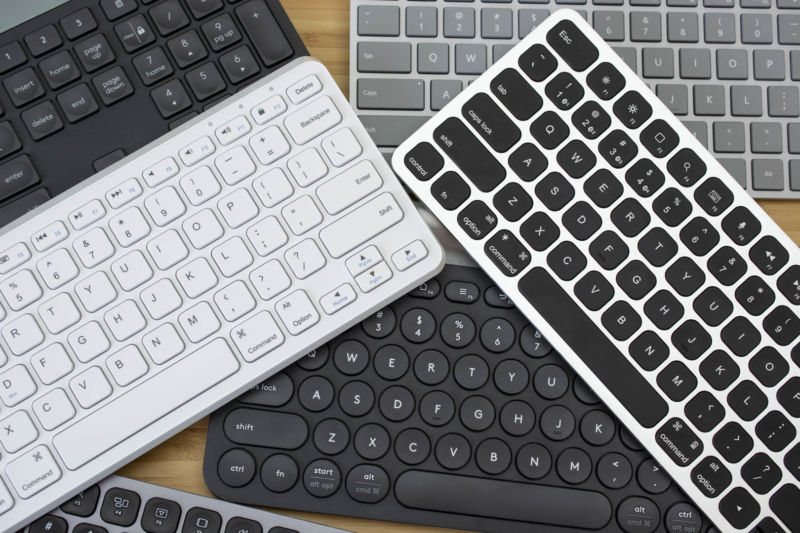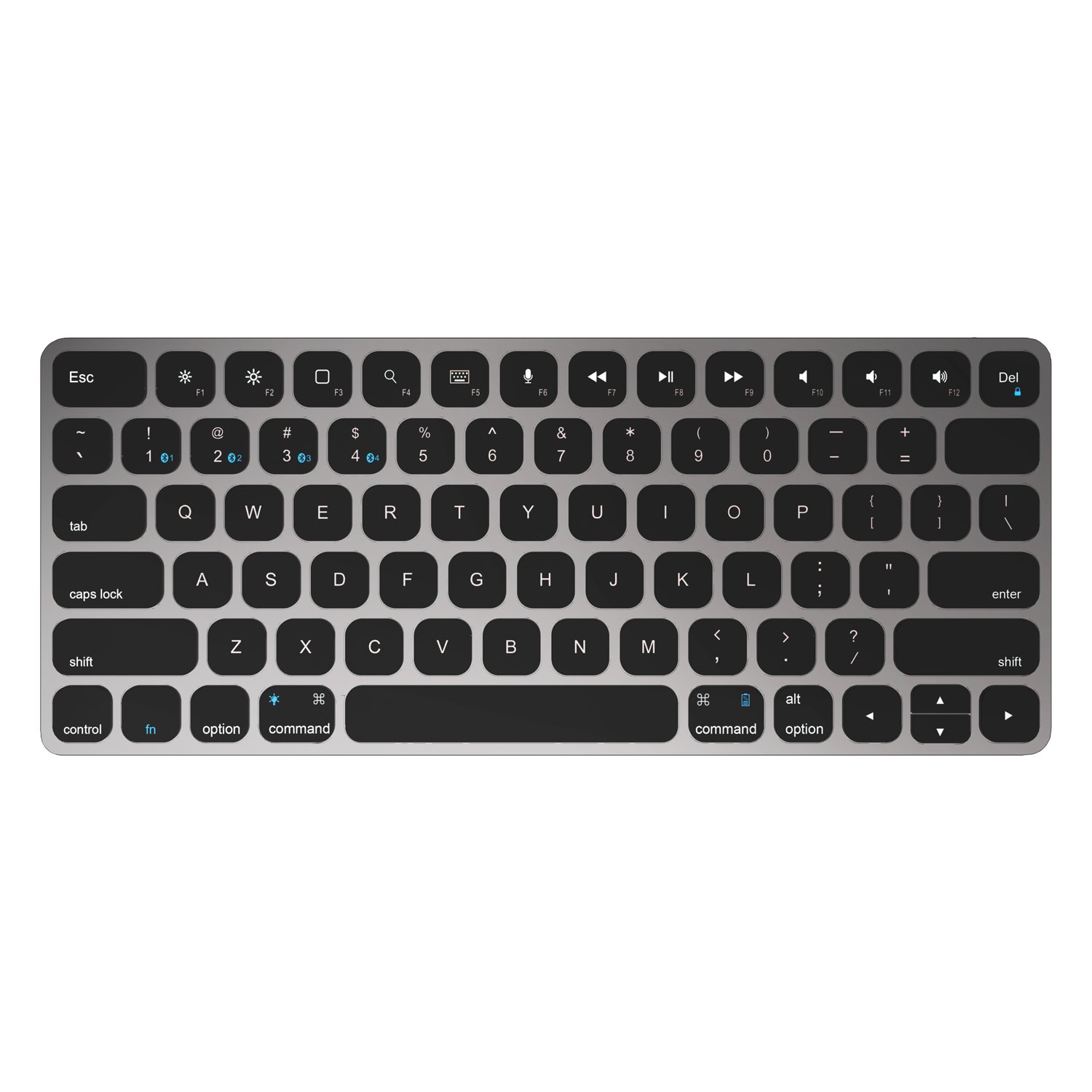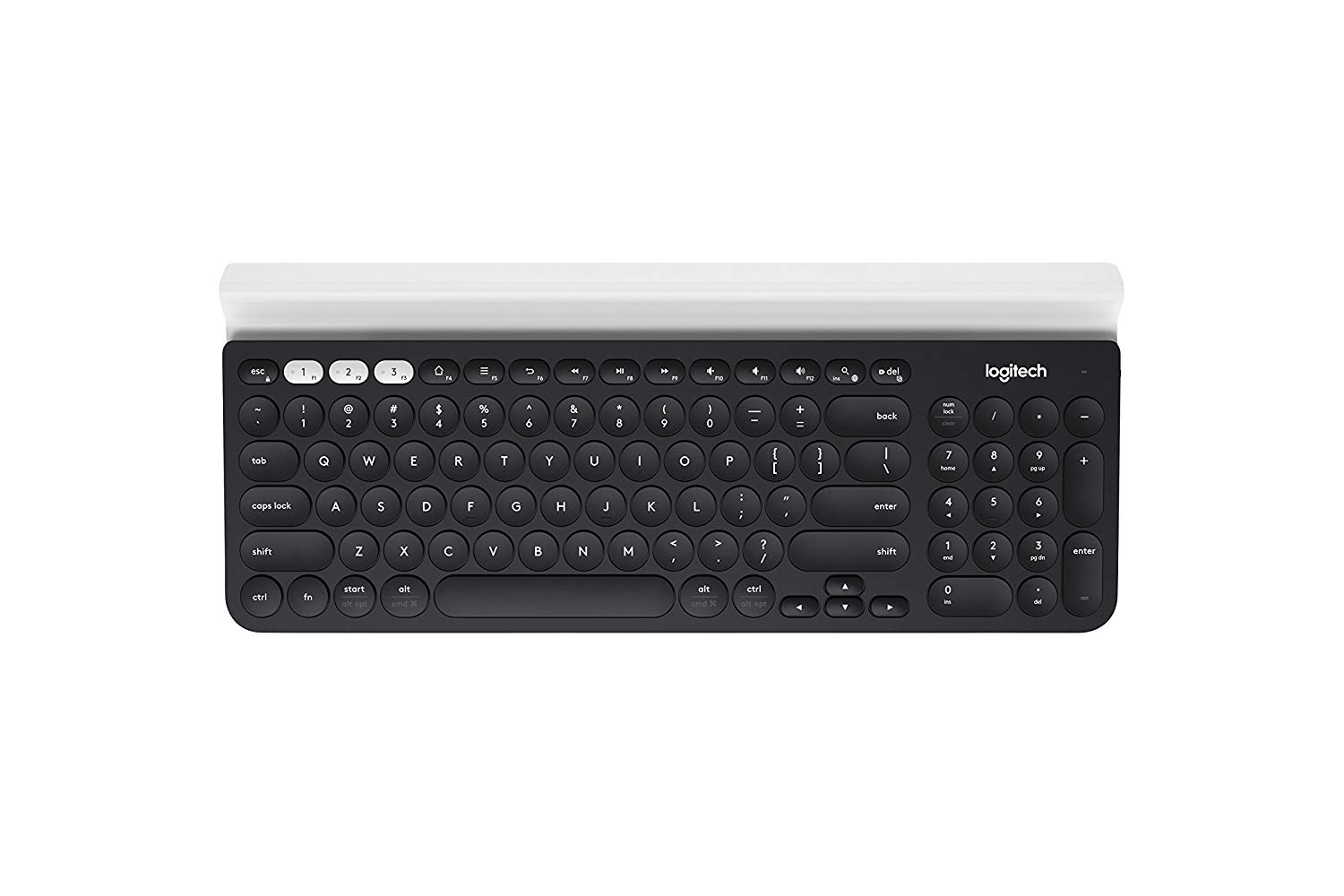
Sometimes the default just doesn't cut it, and that's often true when it comes to keyboards. Whether you're working on a desktop or a laptop, the keyboard you were given or the keyboard built into the machine may not be the best for your working style. If that's the case, you may benefit from re-organizing your workspace to fit a wireless keyboard that connects to your machine via Bluetooth or a USB receiver.
But there are scores of wireless keyboards to choose from these days. Big PC companies as well as big accessory manufacturers all make wireless keyboards for various kinds of uses from stationary desk typing to on-the-go working. Luckily, we recently dove into the vast world of wireless keyboards head first. Maybe a modern wireless keyboard will never be as beloved as your old Model M, but there are good options out there—and here's the info you'll need to make your buying decisions easier.
Note: Ars Technica may earn compensation for sales from links on this post through affiliate programs.
Table of Contents
- Who needs a wireless keyboard?
- What makes a good wireless keyboard?
- How we tested and judged
- Best overall
- Kanex MultiSync Slim Aluminum Wireless Keyboard
- The Good
- The Bad
- Runner up
- Logitech K780 multi-device wireless keyboard
- The Good
- The Bad
- Best budget keyboard
- Anker Ultra-Compact Wireless Bluetooth Keyboard
- The Good
- The Bad
- Best premium keyboard
- Logitech Craft
- The Good
- The Bad
- Best for Macs
- Satechi Aluminum Bluetooth Keyboard
- The Good
- The Bad
- Best for Windows
- Microsoft Modern Keyboard with Fingerprint ID
- The Good
- The Bad
Who needs a wireless keyboard?
The decision to buy a wireless keyboard will be more obvious to some than others. Those with traditional tower or mini PCs need a keyboard to use their machines, and they may opt for a wireless keyboard to save desk space.
As the name suggests, these keyboard do not connect to PCs with wires—instead they use tiny USB receivers or a Bluetooth connection to connect to a machine. That makes them ideal for those who hate cluttered desk areas, or those who already have enough wires taking up space in their work spaces.
Wireless keyboards, particularly Bluetooth wireless keyboards, are also convenient for those who want to use one text input device across multiple devices. Many (but not all) Bluetooth keyboards can connect to different devices running different operating systems—you could buy one that lets you type on your Windows PC and then switch to your Android smartphone with just a few presses of the proper keys. For those who frequently go back and forth between a PC and a mobile device like a smartphone or a tablet, a wireless keyboard can make it easier to type and interact with all of your devices.
It also goes without saying that on-screen keyboards that you're forced to use on mobile devices aren't the best. Some rely solely on mobile devices, eschewing traditional PCs all together, and those users may want a wireless keyboard to make typing on their mobile devices easier. In the same vein, others may just be unhappy with the physical keyboard that came with their PC (be it a traditional tower or a laptop) and want an external solution.
What makes a good wireless keyboard?
Keyboard preference is highly subjective, as there are many styles and features that are optional rather than necessary. However, we think a good wireless keyboard should tick a few essential boxes, namely in the connectivity and design areas.
Most wireless keyboards connect to PCs using radio frequency (RF) or Bluetooth. The former typically run on the 2.4GHz wireless signal and come with a USB receiver that acts as the link between the keyboard and your PC. Bluetooth-connected keyboards connect to PCs without the need for a USB receiver. However, your PC must have Bluetooth capabilities to do so, which isn't a problem for modern devices but may be on older PC models.
Regardless of the type of connectivity, a good wireless keyboard should have a strong, stable connection to its host PC. Nothing is worse than choppy input from a wireless accessory, and having a strong base connection can prevent that from happening.
A good wireless keyboard should also be comfortable to type with—a shocking concept, right? This is one of those aspects that will be unique to all users. Some may be perfectly happy typing on the keyboard that's attached to their laptop, while others crave the clickier pastures of mechanical keyboards or similar devices. We'll go into detail about how we judged each keyboard we tested in the next section, but in general, a good wireless keyboard should make the typing experience easier and more comfortable than whatever your previous default experience was before.
How we tested and judged
Typing comfort: We completed the 200-word 10FastFingers typing test on all of the keyboards we tested to gauge how easily each made it to type quickly and efficiently. We also spent at least two days with each keyboard and typed hundreds of words with them as we went through our regular work days (as a writer, I spend more hours of the day typing, so each keyboard got a considerable amount of love). We also took into account key travel and actuation—in general, keys should have around 1.2mm of travel between them, and actuation shouldn't be so low as to allow accidental keystrokes.
Connectivity and compatibility: We considered both Bluetooth and RF wireless keyboards for this guide. We generally believe Bluetooth is the better option of the two because it doesn't hog a USB port like RF models do with their receivers. However, both are good options for anyone who wants to ditch their traditional wired keyboards.
Connectivity goes hand in hand with compatibility. While some wireless keyboards are designed for just one operating system, others (which are arguably the better of the bunch) can work on different types of devices. We used a MacBook Pro, a Dell XPS 13, an iPhone XS Max, and a Samsung Galaxy Note 9 to test the keyboards. For RF keyboards, we only connected them to the MacBook Pro and the XPS 13, but we attempted to connect and use each Bluetooth keyboard with all four devices. In doing so, we were able to test how well (if at all) a wireless keyboard worked with operating systems that its specifications did not explicitly support.
Portability: Keyboards come in all shapes and sizes—some are designed to be minimalistic, while others are designed to achieve another level of ergonomic comfort. We didn't limit our testing to only compact keyboards, but rather we took into account the dimensions of each device to see if it could fit into a standard backpack (one that could hold a 13-inch laptop or a large tablet). Because Bluetooth keyboards are wireless, you can take them anywhere and use them with multiple different host devices.
Price: Wireless keyboards can be priced as low as $25 to as high as $150. Our ideal price range for a solid wireless keyboard is $40 to $70. We tested a number of devices in and around that price range so we could recommend an array of products, including those that fit a strict budget and those that are more luxurious.
Best overall
Kanex MultiSync Slim Aluminum Wireless Keyboard
-
The Kanex MultiSync Slim Aluminum Wireless Keyboard.Valentina Palladino
-
The slight angle of its base adds to its comfortable typing experience.Valentina Palladino
-
It has a physical on-off switch and the 750mAh battery inside lasts up to six months on a single charge.Valentina Palladino
-
It's designed for Macs, but it can be connected to up to four devices at once, and that includes Windows, Android, and iOS devices.Valentina Palladino
-
The indicator lights show when Caps Lock is on, when it's connecting to a new device, and when it's low on power.Valentina Palladino
| Specs at a glance: Kanex MultiSync Slim Aluminum Wireless Keyboard | |
|---|---|
| Price | $61.75 |
| OS Compatibility | Android, iOS, macOS, Windows |
| Connectivity | Bluetooth |
| Connected devices | Up to 4 |
| Key travel/ actuation | 1.5mm/60g |
| Battery | Built-in rechargeable |
| Dimensions | 4.5 x 11 x 0.4 in |
| Weight | .68 pounds |
| Other perks | Built-in backlight, included travel pouch |
Out of the dozens of keyboards we tested, Kanex's MultiSync Slim Aluminum Wireless Keyboard will meet most everyone's needs. While the keyboard itself is designed for iOS and macOS use, that's true only in its layout. With its Bluetooth connectivity, it can pair with almost any device that has Bluetooth 3.0 or higher. I tested it with Android, iOS, macOS, and Windows, and it worked exceptionally well across all of those operating systems. You could even have one of each of those devices paired with the keyboard at once thanks to its four-device pairing capability.
Kanex's wireless keyboard also provided one of the best pairing and switching experiences of all of the keyboards I tested. The standard process of pairing a wireless keyboard for the first time over Bluetooth requires you to press a combination of keys—in Kanex's case, the Fn key and one of the first four number keys (all of which have a designated Bluetooth icon on them). Since Kanex's keyboard is designed for Macs, I didn't even have to do so when I went to pair it with my MacBook Pro—my machine recognized the device in its Bluetooth menu, allowing me to pair and start typing within seconds.
But I did have to follow the standard pairing instructions when assigning new devices to the rest of the number keys. After the initial pairing, I could quickly press Fn+2 to switch to my Dell XPS 13 laptop and then Fn+1 again to go back to my MacBook Pro.
In testing so many keyboards, I found that the best ones often had a similar typing experience characterized by decent key travel, an actuation level that requires just the right amount of force as to not mistake slight brushes for key presses, and subtly clicky keys. Kanex's keyboard ticks all of those boxes—it's comfortable to type on and I appreciate that nearly all of its keys (including the non-character ones) are sized normally. Even the Function keys on its top row are all sized the same as character keys, making it easier to adjust volume, screen brightness, and more.
Kanex's wireless keyboard also includes a backlight, something that most other devices don't have. Pressing Fn+Command allows you to turn on the backlight, adjust its strength, and turn it off as well. This makes Kanex's keyboard a viable option for those who often find themselves in dark environments as well as those who travel a lot. The keyboard's design makes it a great travel accessory—measuring 4.5×11×0.4 inches and weighing just .68 pounds, it's slim, light, and attractive. Its aluminum construction adds to its premium look and feel, and Kanex even includes a cloth carrying pouch in the box so you protect the keyboard when it's in a bag or backpack.
The keyboard also comes with a microUSB cable for charging the device's 750mAh battery. It should last up to six months on a single charge, depending on how much you use it. In the few weeks I tested it and many other keyboards, I only recharged Kanex's keyboard once. It also has a sleep mode and a dedicated on-off switch that lets you conserve battery power when the device isn't being used.
As you'll see in our other keyboard picks, Kanex's wireless keyboard doesn't do everything a wireless keyboard can do. It doesn't have a number pad, it doesn't have customizable keys, and it doesn't come with a USB-receiver. However, it does have all of the essentials we want in a wireless keyboard, including a stable Bluetooth connection, an easy device-switching mechanism, comfortable keys and key layout, and an attractive, portable design. All of that plus its $61.75 price tag makes it hard to beat.
The Good
- Attractive backlit keyboard that pairs to and works well on many OSes.
The Bad
- Small up- and down-arrow keys.

Kanex MultiSync Slim Aluminum Wireless Keyboard
Runner up
Logitech K780 multi-device wireless keyboard
-
The Logitech K780 multi-device wireless keyboard.Valentina Palladino
-
The rubber cradle holds smartphones and tablets so you can use them without needing an extra stand.Valentina Palladino
-
It can connect to three devices at once, and you can switch between them using these numbered keys.Valentina Palladino
-
Circular keys are the best for long bouts of typing, but these are more comfortable than you'd think.Valentina Palladino
-
The on-off switch helps conserve battery life.Valentina Palladino
-
It connects to devices using Bluetooth or its included USB receiver.Valentina Palladino
| Specs at a glance: Logitech K780 multi-device wireless keyboard | |
|---|---|
| Price | $59.99 |
| OS Compatibility | Android, Chrome OS, iOS, macOS, Windows |
| Connectivity | Bluetooth, USB receiver |
| Connected devices | Up to 3 |
| Actuation | 63g |
| Battery | 2 x AAA (included) |
| Dimensions | 0.9×6.2×14.9 inches |
| Weight | 1.92 pounds |
| Other perks | Integrated rubber cradle, Logitech Options software for key customization |
Logitech makes some of the best PC accessories available, so it was no surprise that its K780 Multi-Device Wireless Keyboard was one of the best we tried. It looks more peculiar than other keyboards because it has an integrated rubber cradle along its top edge that's designed to hold tablets and smartphones. You don't need an extra stand or supportive case on your mobile devices to use them with this keyboard, which is a great perk.
That cradle also makes the K780 a solid keyboard to take with you on the go because it can act as a stand and a keyboard in one. Since it includes a number pad and weighs 1.92 pounds, it's not the most compact or lightweight keyboard available, but it's arguably the most fully featured portable wireless keyboard you can get.
The K780 keyboard can pair with up to three devices using its dedicated switching keys, and it works with Android, Chrome OS, iOS, macOS, and Windows devices. It also connects using either Bluetooth or a USB receiver, giving you the option to choose how you want to connect it to your PC (Bluetooth is the only option for most mobile devices). Pairing and switching was a breeze, and the process is much like any other wireless keyboard—long-press the desired numbered switching key to pair and follow any on-screen instructions.
A short-press of any of the three switching keys after that lets you go back and forth to type on all of your devices. Like most wireless keyboards, it takes a second or two for the switching process to take place, but, overall, the K780 transitions smoothly and quickly from device to device.
While its round keys give the K780 an attractive, modern look, they aren't the best for typing. However, they are decently sized and have good travel, so the shape doesn't completely ruin the typing experience. I used the K780 as my primary keyboard for a couple of days and typed at nearly my normal speed most of the time. In addition to not being a huge fan of circular keys, I'm also not a fan of the keyboard's tiny arrow keys that sit right below the right-side shift key—they are easy to miss.
Logitech makes up for those shortcomings by letting you customize some of the Fn keys with the Logitech Options software. Available for macOS and Windows, this free, downloadable program lets you change the functions of some of the top row's keys depending on the operating system you're using. I mostly work on macOS and I was shocked to see just how many options I had to choose from. For example, the key with the curved arrow icon on it goes back by default, but you can change it to do essentially whatever you want: turn screen brightness up or down, enter full-screen mode, open notifications, initiate a screen capture, and more. Logitech Options acts as a hub for many of its wireless keyboards, so if you happen to have more than one Logitech keyboard, you can change or restore settings on all of them from one program.
On top of that, the K780 should last up to two years on one set of two AAA batteries, which come conveniently pre-installed when you buy the keyboard. While I prefer built-in rechargeable batteries, this isn't a bad option. The keyboard has an on-off switch so you can conserve power when you're not using it, and it will also automatically go into sleep mode after a while of you not using it.
Considering all of its features, Logitech's K780 provides a lot of value for your money. Pricing is a bit all over the place—Logitech sells it for $79.99, but it starts at $59.99 on Amazon—but even at its most expensive, the K780 is well worth its decent price tag.
The Good
- Customizable keyboard that works well on all major OSes.
The Bad
- Runs on AAA batteries.

reader comments
172